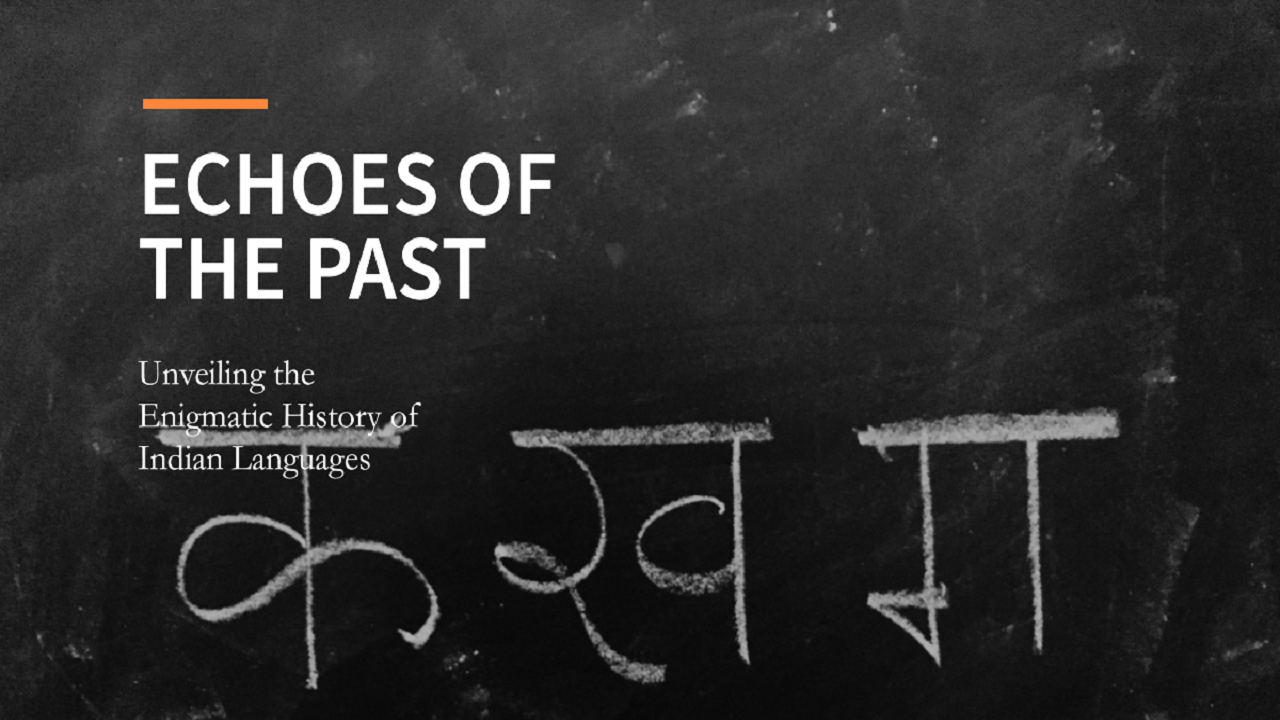Echoes of the Past: Unveiling the Enigmatic History of Indian Languages
Unveiling the enigmatic history of Indian languages takes us on a captivating journey through time. From the ancient origins in Sanskrit to the emergence of Prakrits and the regional marvels across India, we explore the diverse linguistic landscape of the nation. We delve into the colonial and modern influences on Indian languages and the ongoing efforts to preserve and revive endangered languages. Join us in celebrating the echoes of the past and discovering the significance of Indian languages in shaping cultural identity and fostering linguistic diversity.

Language is the backbone of human communication and a crucial aspect of cultural identity. India, known for its rich diversity and vibrant traditions, boasts a linguistic landscape that is as captivating as it is complex. From the ancient texts written in Sanskrit to the regional languages spoken across its vast expanse, Indian languages have a history that echoes through the ages. In this blog, we embark on a fascinating journey to unveil the enigmatic history of Indian languages, exploring their origins, evolution, and enduring significance.
The Ancient Origins
The history of Indian languages traces back to antiquity, with the Vedas serving as the earliest known texts in the subcontinent. Written in Sanskrit, the sacred language of the Hindu scriptures, the Vedas offer insights into the linguistic heritage of India. Sanskrit, renowned for its complexity and poetic beauty, played a pivotal role in shaping subsequent languages and became a foundation for literary and philosophical works.
The Influence of Prakrits
As the centuries passed, Prakrits, a group of vernacular Middle Indo-Aryan languages, emerged alongside Sanskrit. These Prakrits gained popularity among the common people and found their expressions in literary works, dramas, and folk traditions. Pali, an ancient Prakrit, became the language of Buddhism and spread across various regions, leaving an indelible mark on Indian linguistic history.
Regional Marvels
India's linguistic landscape boasts a multitude of regional languages, each with its unique flavor and cultural significance. From the mellifluous Tamil of South India to the rhythmic Bengali of the East, and from the lyrical Punjabi of the North to the graceful Marathi of the West, every regional language tells a tale of its own. These languages have evolved over centuries, influenced by cultural interactions, historical events, and local dialects, reflecting the diverse tapestry of India's heritage.
Colonial and Modern Impact
The advent of colonial rule in India brought significant changes to the linguistic landscape. European powers introduced their languages, primarily English, as the medium of education, administration, and trade. While English became an essential language for upward mobility and international communication, it also influenced the development of Indian languages. Vernacular languages absorbed elements from English, resulting in the emergence of a vibrant blend known as Indian English, which reflects the cultural synthesis of the nation.
Language Preservation and Revival
Despite the challenges posed by globalization and modernization, efforts to preserve and revive endangered Indian languages have gained momentum in recent years. Recognizing the importance of linguistic diversity, initiatives have been taken to document and revitalize endangered languages, ensuring their survival for future generations. These efforts not only safeguard linguistic heritage but also foster a sense of pride and cultural identity among communities.
Conclusion
The enigmatic history of Indian languages is a testament to the resilience and vibrancy of India's cultural fabric. From the ancient roots of Sanskrit to the dynamic evolution of regional languages, Indian languages have endured through the centuries, carrying within them the stories, traditions, and wisdom of generations. Exploring this linguistic tapestry offers a deeper understanding of India's rich heritage and reinforces the value of linguistic diversity in our interconnected world. Let us continue to celebrate and cherish the echoes of the past, ensuring that the enigmatic history of Indian languages remains a vibrant part of our present and future.










